
2023 Northwest Fish And Wildlife Year In Review
At the end of every year I like to take a look back at the Northwest fish and wildlife stories that made news, and 2023 did not disappoint.
From Washington’s Fish and Wildlife Commission to the halls of Congress, the Klamath to the Snake, first fisheries to %@*@^@^& fisheries, and weird wildlife wanderings to one of the weirdest fishing trips of all time, the year that just was had a lot to get off its chest.
Here are some of the highlights from this blog and elsewhere — I absolutely know I’ve forgotten important stuff, so email me at awalgamott@media-inc.com.
JANUARY
When Washington’s legislature convened, bills that would have banned nontribal commercial gillnets in the Lower Columbia, required smelt dippers, carp anglers and crawfish catchers to have a recreational fishing license, and delist wolves from the state ESA protections in the eastern third of Washington were introduced but in the end all failed to net passage. However, the legislative session did provide a platform for several legislators to grill WDFW about Columbia gillnet buyback program implementation, including how one netter sold four licenses for $350,000 but kept netting after buying another license.
In Oregon, Scout, a young black Lab, was enlisted as the state’s second conservation K-9 helping to protect Oregon’s fish and wildlife. He was sent to Indiana for specialized training in article searches, wildlife detection and human tracking before being stationed in Bend. Scout and fellow doggo warden Buck are a product of Oregon’s enhanced efforts to combat poaching that came out of the 2019 legislative session and has also included hiring more officers to patrol the woods and waters.
In late January, Larry Cassidy, a key player in the Northwest conservation world, passed away at 83 years old. He served on the Washington Game Commission, North Pacific Anadromous Fish Commission, as a U.S. Commissioner during salmon treaty negotiations with Canada, Northwest Power and Conservation Council and helped elevate the importance of salmon and big game during fishing trips and conversations with a powerful Congressman.
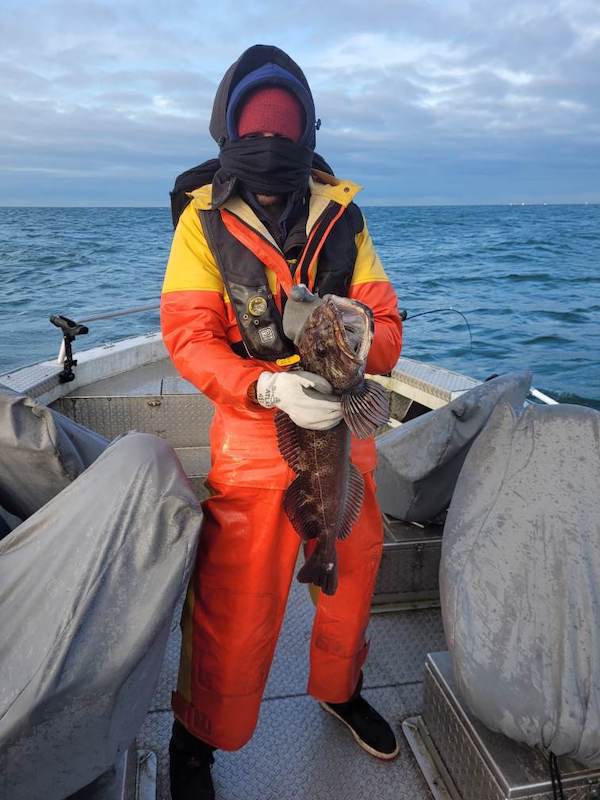
FEBRUARY
Idaho Fish and Game began a deer cull in Hells Canyon to try to minimize the spread of a chronic wasting disease outbreak into nearby herds, ultimately removing 442 deer, including 24 CWD-positive animals. The always fatal deer family disease was first detected near Whitebird in fall 2021, but late in 2023 infected animals were also found to the south near New Meadows
The National Marine Fisheries Service found that listing Olympic Peninsula steelhead under the Endangered Species Act listing “may be warranted,” prompting a 12-month deep dive that will wrap up in early 2024. The finding was prompted by a petition from the Wild Fish Conservancy and The Conservation Angler.
Columbia steelhead managers forecast what would have possibly been an all-time worst return of A- and B-runs, just 63,400, but fortunately it did not come to pass. By year-end, over 111,000 had been counted at Bonneville Dam, though that figure is also only 72 percent of the 10-year average over a generally poor decade.

In the lipstick-on-a-pig file, surplus hatchery steelhead were released into Chehalis Valley lakes in hopes they would provide some value to anglers who were once again barred from fishing Grays Harbor tributaries due to below escapement returns of wild steelhead and WDFW and the Quinault Indian Nation not coming to an agreement to open anything besides limited hatchery coho fisheries early in winter. Hopefully there’s still some lipstick left in the tube because the same thing is gonna happen this season.
The State of Salmon in Watersheds report found few brights spots for Washington Chinook, coho, sockeye, steelhead and chums, with key stocks in the Snake, Columbia and Puget Sound “in crisis” or “not keeping pace” in terms of recovery. Later in spring, a “comprehensive” synthesis of long-term salmon population data for stocks from Vancouver, BC, down to Sacramento was pretty much just as gloomy, outside of some Portland-area stocks showing positive trends due to ecosystem and passage work.
MARCH
A pair of retired biologists – tribal fisheries bio Steven Parker of Yakima and former WDFW ungulate researcher Woody Myers of Spokane – were appointed by the governor to the Washington Fish and Wildlife Commission, while the term of Chair Barbara Baker was reupped. Left out in the cold was Spokane birdwatcher and thorn-in-Inslee’s-side Kim Thorburn, who had hoped to be reappointed to the board that sets WDFW policy, as had many hunters. Unlike a previous round of new commissioners, this time sportsmen at least had a chance to provide the Governor’s Office input on the nominees.
The national Sportsmen’s Alliance Foundation sued Lorna Smith over her concurrent seats on the Washington Fish and Wildlife Commission and Jefferson County Planning Commission, arguing that she couldn’t hold two appointive offices at once under state statutes. Smith was represented in superior court on the state’s dime and a judge ruled against her, leading the Fish and Wildlife Commission’s attorney to report Smith had remedied the situation by resigning from the planning commission. An appeal is ongoing, but as of the end of the year, Smith is no longer listed on that county board.
A chance to get in on a mentored turkey hunt in Northeast Washington filled up faster than you can say “gobble-gobble!”, a testament to the high interest people have in getting out and learning how to pursue abundant wild turkeys, and part of WDFW’s efforts to strengthen hunter numbers and get more folks into the outdoors.
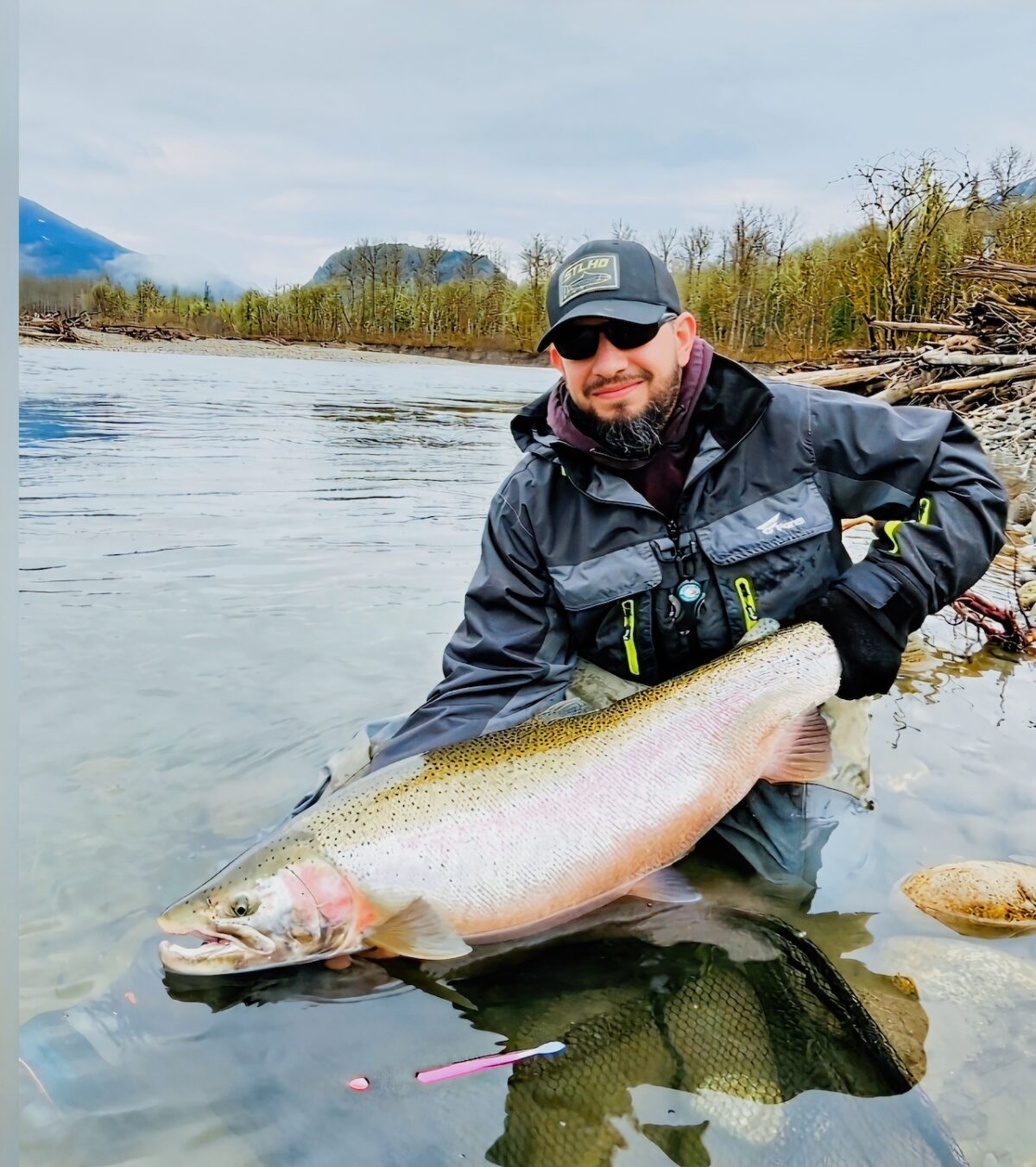
While the Cowlitz didn’t open for smelt dipping, Oregon managers were able to open the Sandy for seven surprise hours, thanks to the largest run up the Portland-area river since 2015. At least 1,908 smelt continued upstream to Bonneville Dam too, the strongest showing there since at least 1997, and many others made an appearance in Washington’s Kalama.

APRIL
Washington’s invasive European green crab problem received some federal attention when Senator Patty Murray and Congressman Derek Kilmer, both Democrats, visited a Strait of Juan de Fuca bay where the destructive crustaceans have been found. Thanks to focused efforts, a record 339,589 were removed in 2023 through early December, though inexorably some moved deeper into Admirality Inlet– several were found at Oak Bay, south of Port Townsend later in the year.
In a low point for the overall image of anglers, videos showing two fishing boats swerving at sea lions in the Lower Columbia made local and national waves. If there was a bright side, it was that the episode illustrated and reinforced to the wider public that we have a pinniped predation problem in the big river, home to numerous ESA-listed fish stocks we’re throwing billions at trying to recover.
No surprise, but Washington’s wolf population rose yet again in 2022, marking 14 straight years of growth, including a first pack in the South Cascades, a development described as “a fundamental leap forward” towards reaching state recovery goals. Oregon also saw continued growth, particularly in the state’s West Wolf Management Zone, while the house is pretty much full in the northeast corner.
Speaking of wolves, ODFW used DNA testing to pin a Southern Oregon mushroom picker’s “wolf” attack on a male domestic dog instead.
Anglers were infuriated to learn they could only count on three days of fishing for Skykomish River hatchery summer Chinook as WDFW and tribal managers committed to trying to rebuild a year-class of wild kings in the system following their sharp drop in the late 2010s. It was staggering news for what is essentially Puget Sound’s version of the Cowlitz and saw summer steelheaders limited to the upper Sky to minimize Chinook impacts – well, until it too had to be closed. Even pink and coho seasons saw restrictions and delayed openers because of it.
In what amounted to a strong nod from state lawmakers, all nine Washington Fish and Wildlife Commission members were confirmed by the Senate, four by wide margins but five by sharper, largely partisan splits.
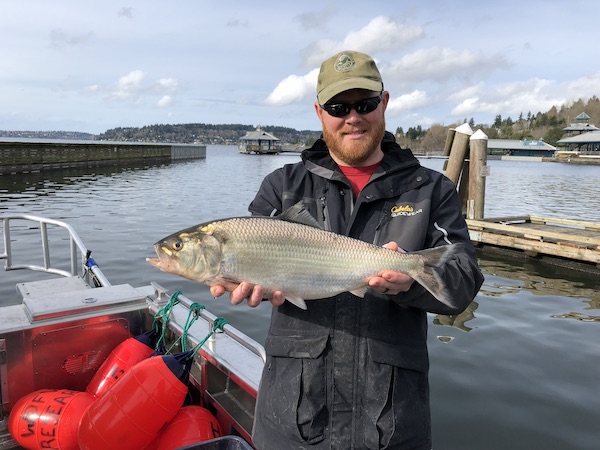
Washington legislators handed WDFW $23 million for new biodiversity work in the 2023-25 state operating budget, but also snuck in an unsettling proviso requiring the agency’s governance, mandate and more to be reviewed and possibly reformed, enraging sportsmen’s groups that had worked in support of the greater package. The proviso tasked UW and WSU’s Ruckelshaus Center to “provide options for making changes to the department’s mandate and governance structure as deemed necessary to improve the department’s ability to function as a trustee for state fish and wildlife,” according to the operating budget’s language, and a report is due back to the legislature by June 30, 2024.
After a public fight with local tribes and Skagit County officials, Seattle City Light finally committed to adding up- and downstream fish passage around its three ladderless dams on the Skagit River as part of the federal relicensing process. Scott Schuyler of the Upper Skagit Indian Tribe told dogged KING 5 reporter Susannah Frame that the news was “a huge relief to our people” and he gave SCL credit for changing its position.
MAY
WDFW proposed downlisting wolves from state endangered to protected-sensitive in a periodic status review. The recommendation acknowledges that breeding pair numbers have “far exceeded” 2011 management plan goals, at least at a statewide level, but that few have crossed into the South Cascades and Northwest Coast Recovery Zone, as required. A final decision by the Fish and Wildlife Commission is slated for mid-April 2024 and it would be nice to move on from wolves and focus state wildlife efforts on species that Actually Need The Help … but don’t count on it with this crew, whose appointer pressed his thumb on the scale later in the year to say wolves shouldn’t be downlisted.
Speaking of wolves, Colorado Parks and Wildlife and its new director – Jeff Davis, the former WDFW conservation director – came a’calling for some of Washington’s packees for its voter-mandated wolf reintroduction. Ultimately it was a no go, but after also being snubbed by Idaho, Montana and Wyoming, ODFW agreed to lend Colorado a hand and 10 surplus wolves from Northeast Oregon found new homes in western Colorado at the end of the year.
Following a petition filed in May to list Olympic Peninsula and Chehalis River spring Chinook under the ESA, late in the year NMFS found it “may be warranted” and began a yearlong review. The petition came from Center for Biological Diversity and Pacific Rivers.
Like a pitbull that won’t let go of a little kid, the Wild Fish Conservancy kept trying and trying to derail increased hatchery Chinook production for Washington’s imperiled resident southern resident killer whales, asking a federal judge for an injunction against NMFS’s prey-providing program as the agency redoes its overarching biological opinion guiding salmon fisheries in Southeast Alaska, where many Evergreen State kings pasture.
JUNE
The release of the Washington Fish and Wildlife Commission’s controversial draft Conservation Policy for public comment drew feedback from, among others, former member Kim Thorburn, who termed it “not good governance,” as well as an “advancement of an animal rights preservationist ideological agenda, not conservation.” To be fair, some do like the proposed policy, but you couldn’t count the chair of the Northwest Indian Fisheries Commission among them. Ed Johnstone called it “vaguely worded, and some of the vague principles and definitions of the draft seem to conflate ‘preservation’ with ‘conservation.’ Preservationist policies are not consistent with the exercise of our treaty-reserved rights to harvest natural resources.”
In a change from the past, Washington’s Free Fishing Weekend wasn’t so free. Licenses are now required to fish for salmon, steelhead, sturgeon and halibut as well as harvest clams, oysters and other shellfish on the early June Saturday and Sunday, the result of a 2022 commission decision based around catch card issues, concentrated shellfish harvesting aided by the month’s minus tides and other issues.
Washingtonians for Wildlife Conservation filed a lawsuit against Governor Inslee and five of his appointees to the Fish and Wildlife Commission in hopes a judge would find them unlawful because hunter and angler groups hadn’t been consulted on their appointments, as called for by statute, but the suit was ultimately tossed out by a superior court judge.
In a continuing set of decisions that need to be discussed more widely, the Oregon Fish and Wildlife Commission set up frameworks for three Western Oregon tribes to license and manage their own fish and wildlife seasons, in coordination with ODFW and OSP. The agreements with the Confederated Tribes of the Coos, Lower Umpqua and Siuslaw Indians, Confederated Tribes of Siletz Indians and, later, Confederated Tribes of Grand Ronde were celebrated by tribal members – but not all. The agreement with the Grand Ronde had the Columbia River Inter-Tribal Fish Commission warning of litigation around treaty rights in the Willamette and Lower Columbia and one Portland-area angler fretting that that threat “poses an enormous risk to the State’s public fisheries.”
Expecting improved runs, ODFW chose the less restrictive option for fall Chinook seasons on the Oregon Coast, allowing more harvest on some rivers than the alternative plan’s coastwide tack. Still, the move is being challenged in state court because the agency is not following harvest levels agreed to in the mid-2010s’ coastal management plan.
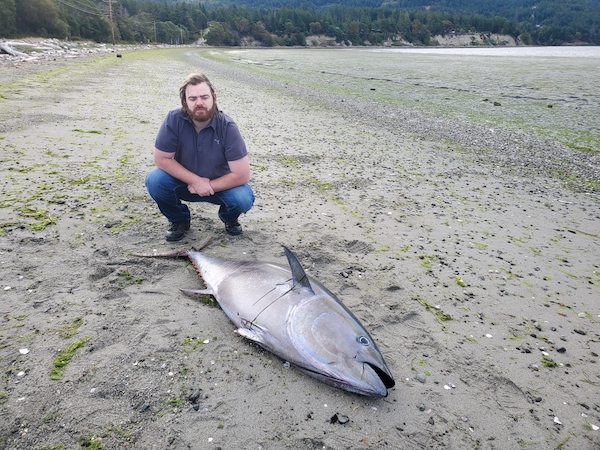
JULY
With surprisingly strong early numbers of sockeye, WDFW opened Baker Lake a week earlier than planned, then boosted the daily limit to five as the run went on to set a new record of 46,958 back to the Baker River trap. The Columbia run came in 103,000 more than forecasted too.
I developed a headache trying to wrap my noggin around the reason a South Puget Sound Chinook fishery was suddenly shut down with 81 percent of the adult quota still available: too many sublegal jacks caught in the test fishery were crashing the sublegal encounter limit, another baseline that guides the fishery and meant to protect juvenile salmon. With a buttload of pink salmon expected, WDFW eventually reopened Marine Area 11 to shore fishing only in August, then with boats in September, to minimize Chinook impacts.
The first case of hemorrhagic disease in a wild Washington rabbit was reported on Whidbey Island. The discovery followed on cases in Oregon in 2021 and 2022.
Write enough words on something and somebody’s bound to notice. Podcasts began focusing attention on the Washington Fish and Wildlife Commission and its moves, as well as having members on for chats. Later in the year, Hunt Talk Radio‘s Randy Newberg and Outdoor Life‘s Andrew McKean put together a stellar four-part podcast examining the trends I’ve been reporting on, looking at the national picture, interviewing Kim Thorburn, bringing in former Nevada Department of Wildlife Director Tony Wasley to talk about hunter relevance, and providing a roadmap for how to push back while going forward.

AUGUST
WDFW and Wild Fish Conservancy reached a settlement in a case that began against the new hatchery summer steelhead program on the Skykomish River and mushroomed to involve dozens of important salmon and steelhead production programs up and down the I-5 corridor. Essentially, WDFW agreed to pay WFC to literally swim with the fishes for four years at a cost to taxpayers of $152,000-$176,000 and WFC promised not to sue over alleged ESA or NEPA violations at 43 Puget Sound and Lower Columbia facilities rearing Chinook, coho and chums.
Walleye continued their “alarming” spread up the Snake River into Hells Canyon, with Idaho managers reporting they’d received more verified catch reports in 2023 than all other years. With concern about potential predation on rearing and outmigrating salmon and steelhead smolts, some began to mull a bounty a la the pikeminnow sport-reward program, though that’s a harder sell for a popular albeit nonnative species such as walleye.

A public-private partnership’s plans to construct a new greenway along the northeast corner of Seattle’s Elliott Bay included restoration of Pier 86, which has been closed to fishing and other uses since 2016 due to structural issues. It’s just one of several overwater structures that have fallen into disrepair in recent years, leading to lost access for Puget Sound anglers. Next steps for Pier 86 included public input, unveiling of initial design ideas, then permitting and construction — if all goes well.
The Oregon Hunters Association doubled down on it efforts to prevent the illegal take of fish and wildlife in the state by doubling how much it pays out for cases resulting in a successful citation, and the organization also added two new offenses it will pay rewards for. It was all part of a broad public campaign this year to raise awareness about the impact poaching has in Oregon and it included a press release about Pendleton resident Walker Erickson, who was sentenced to pay $75,000 in fines and serve 14 days in jail during each of the 2023, 2024 and 2025 elk seasons after he pled guilty to 22 poaching charges.
Buoy 10 produced smoking-hot Chinook fishing at times … with many of those salmon having to be turned back because they were wild. Only hatchery kings could be retained through Labor Day as managers attempted to avoid 2022’s sudden halt of fishing and halting reopeners further up the Lower Columbia.
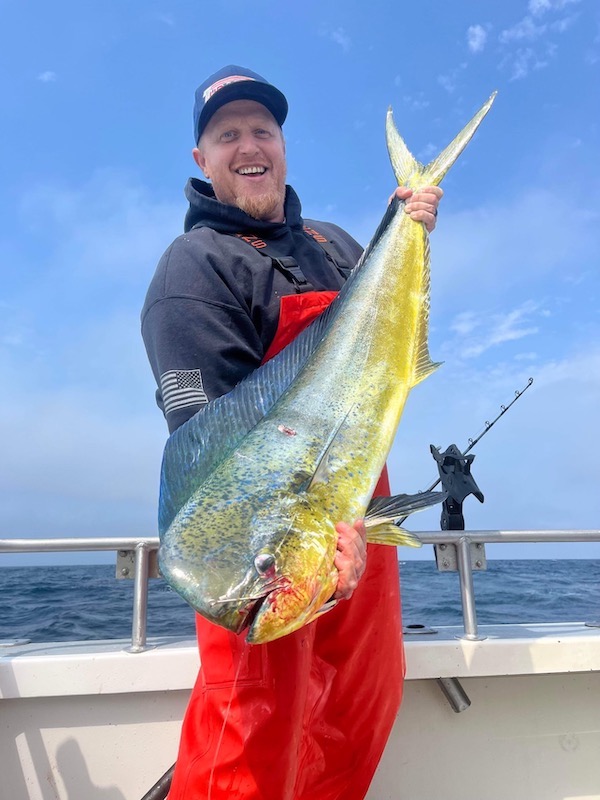
SEPTEMBER
In a staggering disagreement, ODFW and WDFW slipped out of concurrence on nontribal commercial gillnetting on the Lower Columbia when the latter refused to follow the former’s lead on a midmonth fall Chinook fishery. ODFW put netboats on its side of the big river for a single 10-hour opener that produced 449 kings. In not agreeing to the opener, WDFW pointed to a 2022 legislative directive to use impacts from gillnet licenses retired under a buyback program to allow fish to pass upstream. After the kerfluffle, which allowed both states to make a show, it was back to business as usual.
Federal governments on both sides of the North Cascades began moving forward more seriously with plans to reintroduce grizzly bears in the rugged border-straddling range. With a tribal effort aiming to bring back the big bruins on the BC side, US officials are proposing to release three to seven bears a year for five to 10 years on the Washington side under a 10(j), or nonessential experimental population, designation.
The discovery of quagga mussel larvae in Idaho’s Snake — a first in the Columbia watershed — led state officials to close 23 miles of the river near Twin Falls to all fishing, hunting, trapping and other access, and treat the stretch with chelated copper. A large number of fish were necessarily killed as a result, including hatchery sturgeon, but the quick action hopefully saved the region from problems seen elsewhere in the US that the invasive species has colonized. All three Northwest states are monitoring boats entering the area to keep ahead of the threat quaggas and other mussels pose to infrastructure and habitat.
Elk hoof disease may be causing more widespread changes in the ungulates’ bodies than was previously known and which might also be passed down to their calves, researchers looking into the debilitating condition striking wapiti in Southwest Washington and beyond found. Dr. Margaret Wild at Washington State University’s College of Veterinary Medicine stated that treponeme-associated hoof disease may be “exerting changes in molecular factors and processes around the DNA that regulate genome activity independent of DNA sequence in cells throughout the body,” and could be transferred to infected animals’ offspring.
WDFW announced it was taking public comment on allowing anglers and hunters to use their phones to store their various licenses, tag big game and record fish catches — options available in Oregon for several years. Initial feedback was pretty positive. “Yes please it’s 21st century,” urged one commenter.

OCTOBER
The Colville Tribes continued releasing wildlife onto their sprawling Northcentral Washington reservation, including 33 bison, a gift from the nearby Kalispel Tribe, and two dozen or so lynx from Canada. Previously the tribes released pronghorn on their lands, and late in the year a herd of around 90 antelope were captured flowing across a snowy landscape.
A federal Department of Education decision not to fund hunter education and archery programs in schools based on its reading of 2022’s Bipartisan Safer Communities Act was remedied when the US House and Senate amended the act to allow it and President Biden signed it into law.
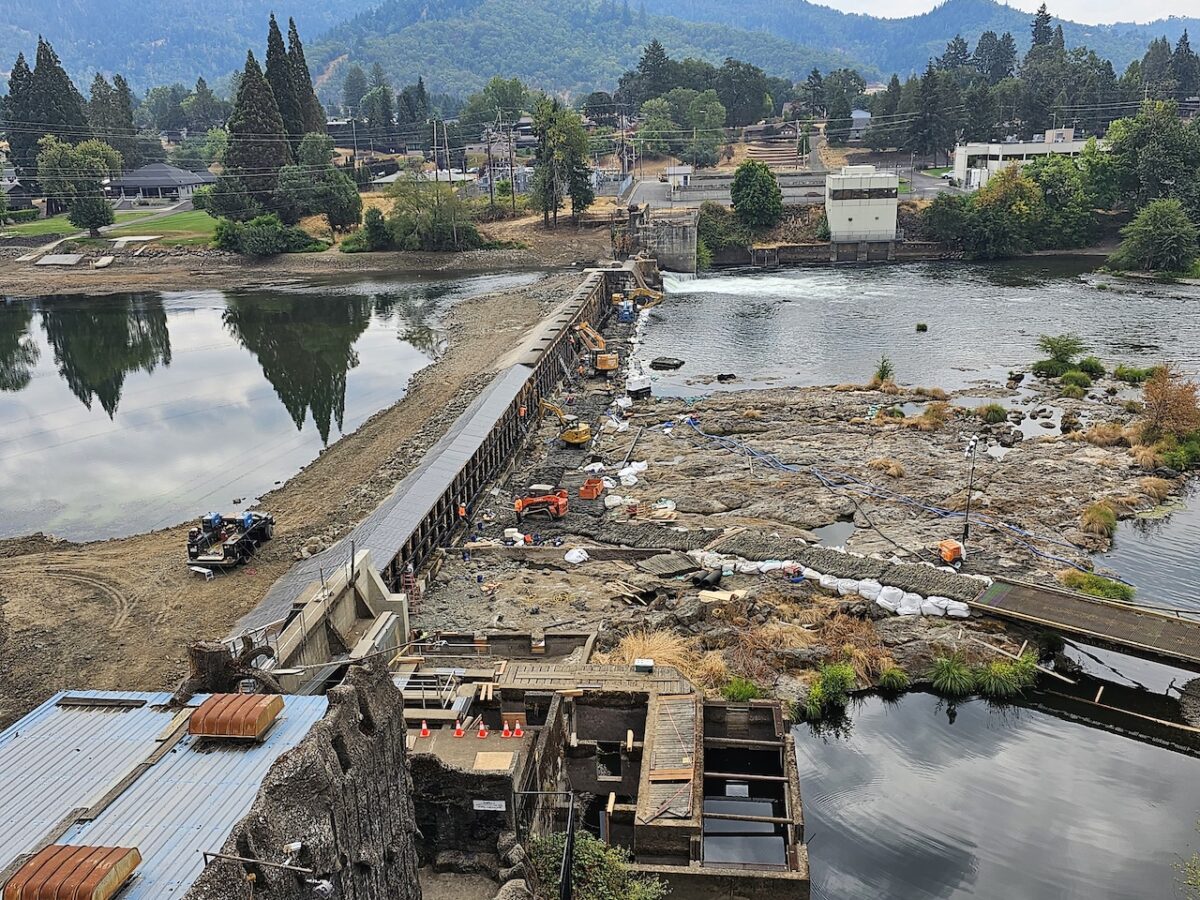
In the first of hopefully more easings of the state and tribal fishing moratorium on the Elwha that began in 2011, the Lower Elwha Klallam Tribe held a ceremonial and subsistence coho fishery on the now damless north Olympic Peninsula river, using rods and lures. “This completely filled my spirit to be back on the water again, to be able to exercise my treaty rights just as my ancestors did and fought for,” Vanessa Castle, a tribal fisheries tech who’d caught two coho, including one she estimated at 15 pounds, told a Seattle Times reporter.
Speaking of coho, they weren’t the easiest to catch, but the runs up the Willamette and Clackamas Rivers set new records this fall. More than 29,000 adults and 11,100 jacks went over Willamette Falls, while 16,528 early and 2,517 late coho were counted at PGE’s North Fork adult trap on the Clack. The utility has been working to improve habitat and passage on the Clackamas, but the widespread big run points to beneficial ocean conditions as well. Late in the year, ODFW reported the first coho ever swam past Leaburg Dam on the McKenzie, a Willamette trib.

NOVEMBER
Legendary Northwest publishing house Amato Books took its flagship title, Salmon Trout Steelheader, as well as other magazines off the racks and went digital only, a move that left some subscribers unhappy but also a sign of the times with print and mailing costing a pretty penny.
Federal environmental regulators granted a petition to develop regulations addressing a vehicle tire compound that, when it reacts with the air and mixes with water, has been shown to kill Northwest coho and other salmonids. The petition was submitted by three West Coast tribes last summer, and in response the Environmental Protection Agency announced it will publish an advance notice of proposed rulemaking around the chemicals 6PPD and 6PPD-quinone by fall 2024.
With the perch fishing far superior to rainbow angling these days, WDFW decided it would no longer manage Curlew Lake as a trout emphasis water and would instead try to maintain the relatively high-quality perch fishery alongside much more limited trout releases, an overthrowing of the state management strategy brought on by bucket biologists.
An Oregon elk hunter did the right thing after shooting and killing a wolf: He reported it. Investigators say he appeared to have acted reasonably after the wolf approached to within 20 yards and left him fearing for his safety. Less reasonable has been the poisoning of at least 16 Oregon wolves and possibly as many as 21, and illegal shooting of another 30, in recent years.

A public pressure campaign by the Quinault Indian Nation failed to get WDFW to close Grays Harbor coho fisheries, as the state agency stood by indicators that showed the run wasn’t on the verge of collapse. Later in fall, when it came time to negotiate coastal winter steelhead seasons, WDFW’s hopes of opening carefully monitored hatchery-directed coho and steelhead fisheries on four Harbor tribs were dashed when QIN wouldn’t agree to do so. Local wild steelhead runs have been chronically below escapement, a particular concern of the nation, though a subsequent letter from WDFW questioned why QIN plans to hold commercial and recrational steelhead fisheries on reservation portions of the also struggling Queets and Quinault Rivers.
A Long Beach salmon snagger was sentenced to more than seven weeks in jail, fined $1,500 and cannot fish for five years for his history of similar violations. David Gretzner, 66, received that sentence on November 16 from Pacific County District Court Judge Nancy McAllister after he pled guilty to first- and second-degree unlawful fishing charges. He was caught attempting to snag Chinook on the Naselle in August while “awaiting trial for his 2022 charges and was still on probation for previous snagging violations,” according to WDFW.

DECEMBER
Following some Washington Fish and Wildlife Commission members’ musings about moving sooner than later on tweaking black bear and cougar hunting regulations and a fall petition from The Usual Suspects to more than reverse harvest liberalizations passed in 2019 and 2020 that allegedly had “significantly” impacted the populations, the commission voted 7-2 to begin rulemaking. WDFW had recommended denying the petition, stating bear and cougar numbers appeared to be stable and that new science on both species was already being considered as part the Game Management Plan update.
Speaking of the commission, its leadership tipped out of balance with the 5-4 election of Tim Ragen as the new vice chair. Ragen’s the retired marine mammal director for whom there’s never enough science or data, and he’s as much a predator advocate as Chair Barbara Baker. Ragen replaces Molly Linville, a Douglas County rancher who has been a steadfast supporter of hunting and state management and a wonderfully even-handed arbiter during increasingly divisive times. Speaking of, the commission will also vote in January on a new Conservation Policy that still fails to recognize consumptive practices and their practitioners in the definition of conservation, though a section labeled “tribal considerations” has been added.
As a midmonth federal court deadline approached, the White House, states of Oregon and Washington and four Inland Northwest tribes announced a 10-year pause in another long-running court case over dam operations and salmon in the Columbia and Snake basin. The elephant in the room – breaching the lower four dams on the Snake – is ultimately a decision of Congress’s, the agreement acknowledges, but the parties committed to major funding for fish and wildlife in the watershed and improve flows for salmon, a tribal clean energy program, and studying how to replace the barging, irrigation and recreation services provided by the Snake’s reservoirs.

